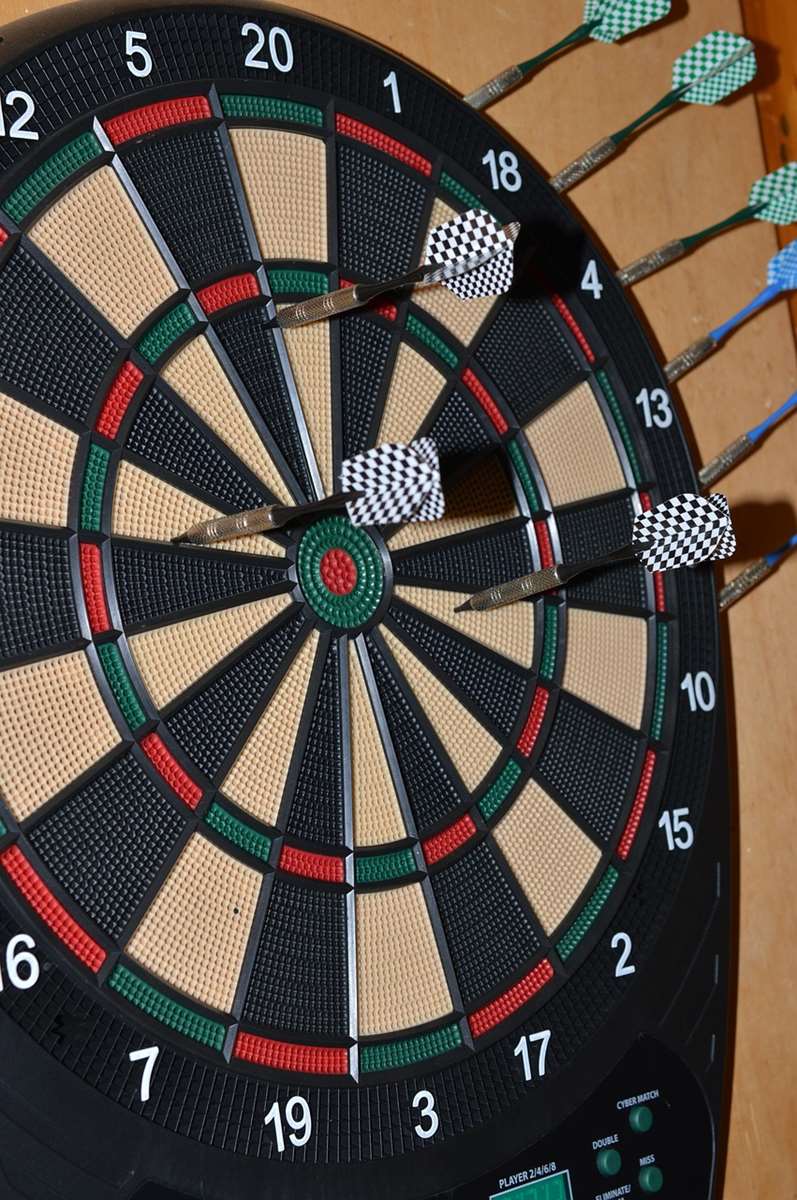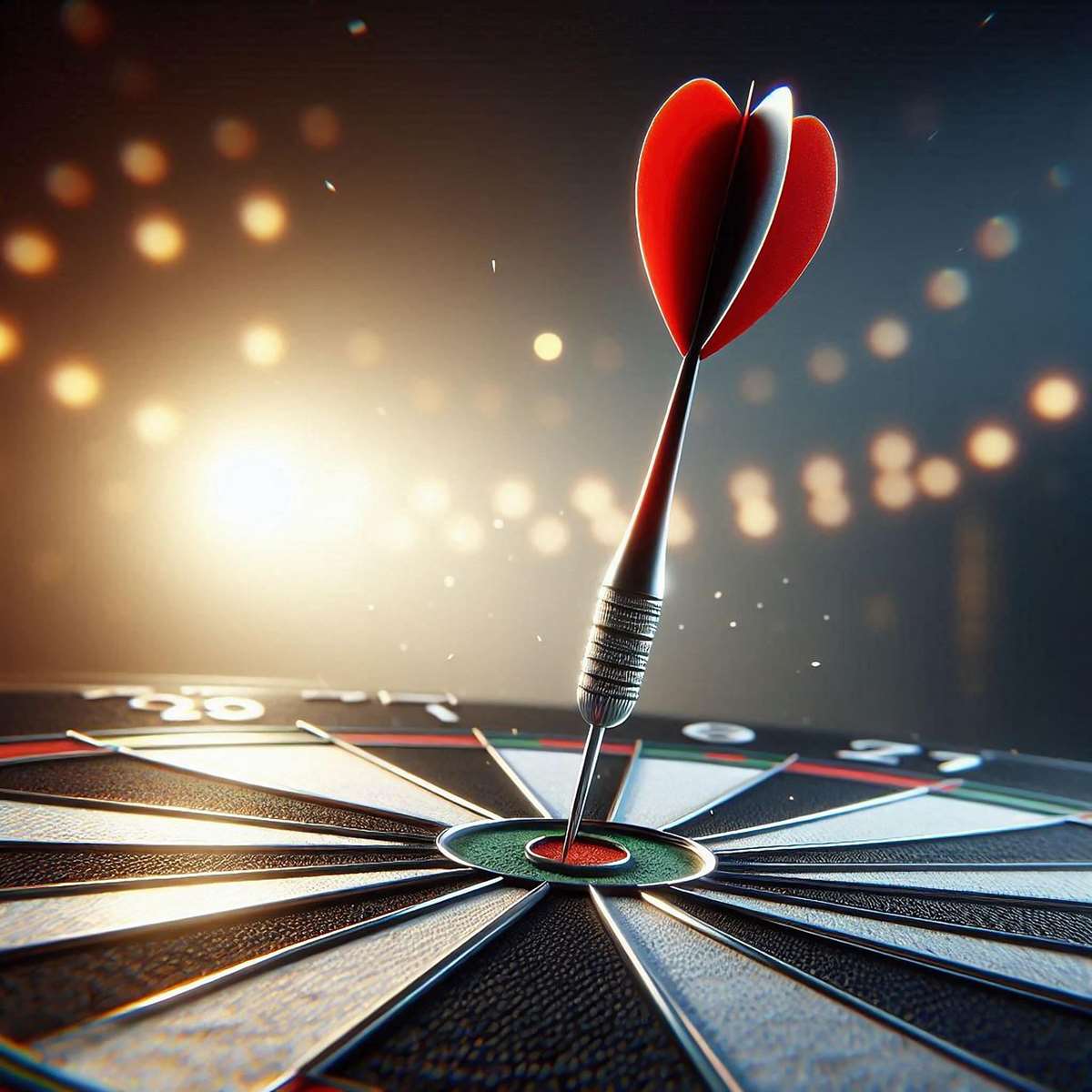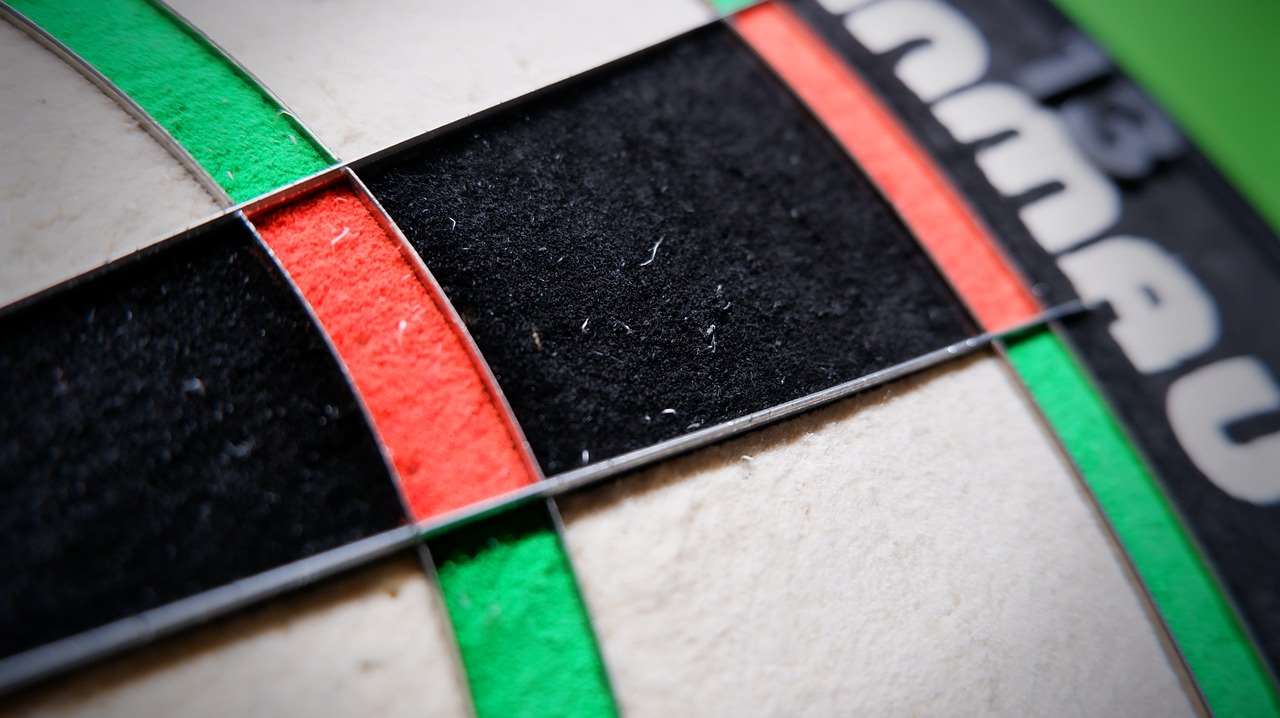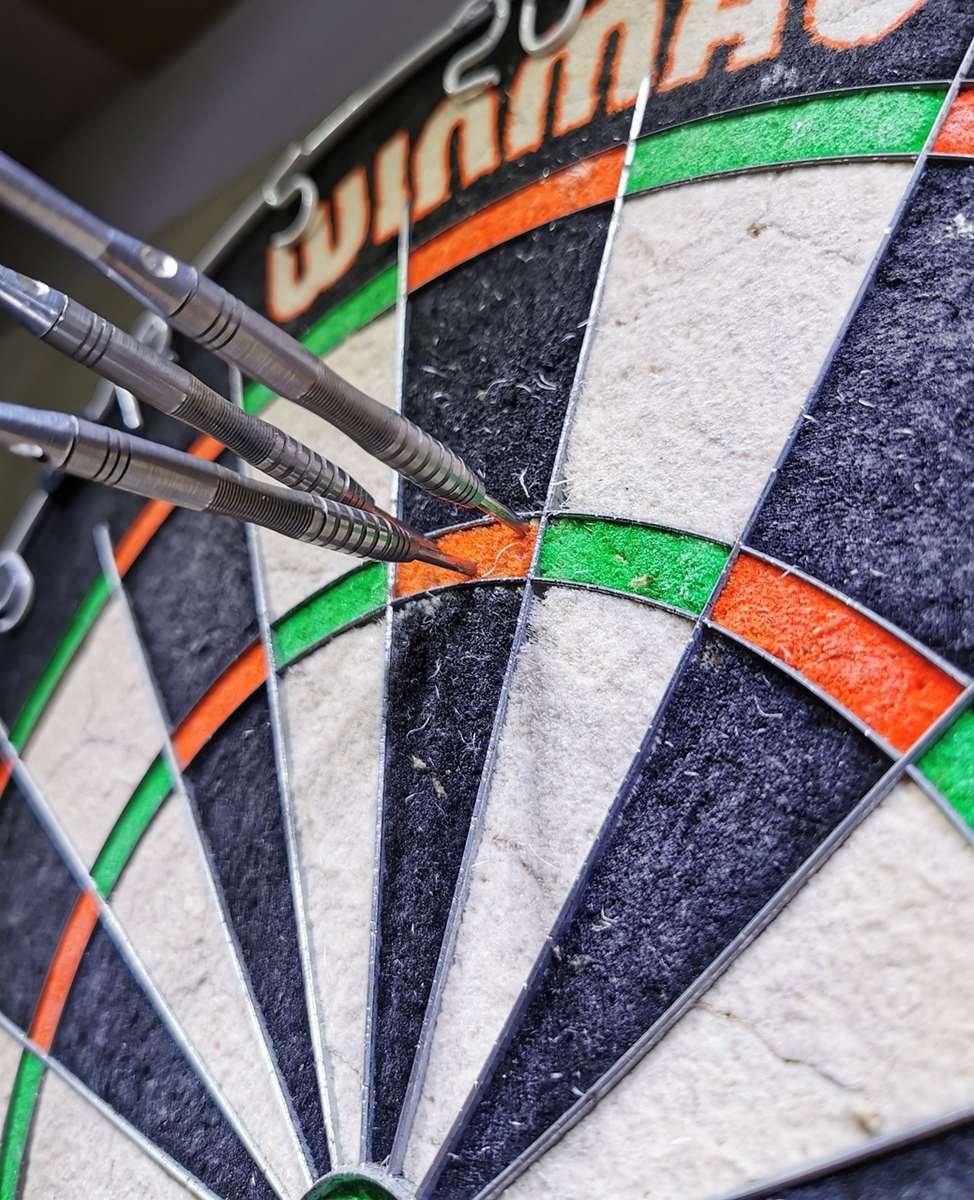Want to level the playing field in your next darts tournament? Tournament handicap fun games are the perfect solution, allowing players of all skill levels to compete and have a blast. This article explores various handicap systems and fun game formats to create exciting and engaging darting experiences for everyone.
⚠️ Still Using Pen & Paper (or a Chalkboard)?! ⚠️
Step into the future! The Dart Counter App handles all the scoring, suggests checkouts, and tracks your stats automatically. It's easier than you think!
Try the Smart Dart Counter App FREE!Ready for an upgrade? Click above!
The Allure of Tournament Handicap Fun Games
Traditional tournaments often favor experienced players, leaving beginners feeling discouraged. Implementing a **handicap system** transforms the dynamic, fostering inclusivity and making the competition more unpredictable and exciting. The core concept of tournament handicap fun games is to adjust the scoring or rules based on each player’s ability, giving everyone a fair chance to win. This not only boosts morale but also encourages players to improve their skills, knowing they can be competitive regardless of their current level.
Why Choose Handicap Systems?
- Increased Engagement: Players of all skill levels feel more involved and motivated.
- Fairer Competition: Handicaps level the playing field, making matches more competitive.
- Greater Enjoyment: Reduced frustration for less experienced players and a more challenging experience for seasoned pros.
- Improved Skill Development: Encourages players to practice and improve to reduce their handicap.
- Social Benefits: Creates a more inclusive and welcoming atmosphere.
Popular Handicap Methods for Darts
Several established handicap methods can be used to structure tournament handicap fun games. Each approach has its advantages and disadvantages, so choosing the right one depends on the specific group of players and the tournament format.

Point-Based Handicaps
One of the simplest methods is assigning players a **point handicap**. This involves giving weaker players a head start in each game by awarding them a certain number of points before the game begins. For example, a player with a handicap of 20 would start each leg of a 501 game with 521 points. This method is easy to understand and implement, making it ideal for casual tournaments or for Darts for mixed ability groups.
Dart Deduction Handicaps
Another option is to deduct darts from the stronger player’s total per leg. For example, they may have to finish the leg in 18 darts, while the player with a larger Handicap system fun dart games can take 25. This adds a strategic element as the stronger player needs to be incredibly efficient.
Average-Based Handicaps
This method relies on calculating each player’s average score over a set number of games. The difference in averages is then used to determine the handicap. For instance, if one player averages 60 points per turn and another averages 40, the weaker player would receive a handicap proportional to the 20-point difference. This ensures fairer play, as demonstrated by a previous discussion on Making darts games fair players.
Percentage-Based Handicaps
Similar to average-based handicaps, this method calculates a percentage based on each player’s average. The weaker player then receives a percentage of the points needed to win. For example, in a 501 game, a player with a 10% handicap would only need to score 451 points to win. This approach can be slightly more complex to calculate but can provide a very precise and balanced handicap.
“Spot” Handicaps
This is a more general term where you “spot” weaker players certain advantages. This can include allowing them to start closer to the board, having a wider target area, or even getting extra attempts at the bullseye. This is usually reserved for extremely uneven skill levels. Consider this when Scaling dart game difficulty.
Fun Darts Games to Enhance Tournament Excitement
Beyond standard 501 or 301, incorporating a variety of **fun dart games** can significantly boost the entertainment value of your tournament. These games often introduce unique rules and scoring systems, making them accessible and enjoyable for players of all abilities. When you Darts Variants Fun Games, you add to the player experience.

Around the Clock (or Round the Board)
This classic game involves hitting each number on the dartboard in sequence, starting with 1 and progressing to 20. A handicap can be applied by allowing weaker players to skip numbers or start from a higher number. For example, a player with a handicap could start at number 5, giving them a significant advantage.
Cricket
Cricket involves scoring points on specific numbers (20, 19, 18, 17, 16, 15, and the bullseye) by hitting each number three times to “open” it. Once a number is opened, the player scores points on that number until their opponent also closes it by hitting it three times. Handicaps can be introduced by giving weaker players a head start on closing certain numbers or reducing the number of hits required to open a number. This method is very adaptable when you consider Adjusting dart game rules.
Killer
Each player throws a dart with their non-dominant hand to get a number. They must then “kill” the other players’ numbers by hitting them twice. Once a player loses both hits to their number, they’re out. Handicaps can be introduced by giving weaker players extra lives or allowing them to choose their number. It is also important to ensure that everyone is ready to Adapting darts games skills.
Shanghai
Each round, players attempt to score on a specific number, starting with 1 and progressing to 20. The goal is to score as many points as possible on the designated number. Handicaps can be applied by giving weaker players bonus points on each round or allowing them to choose which number to target. Hitting a triple on the designated number instantly wins the game.

Halve It
Players start with a score of, say, 40 points. Then a sequence of targets is announced, and if you fail to hit the target on your turn your score is halved! Targets may be 20, then any double, then any treble, bullseye, etc. This is a great game when considering Darts games different skill levels.
Implementing Your Own Tournament Handicap System
Setting up a **tournament handicap fun games** system requires careful planning and consideration. Here are some steps to ensure a successful and enjoyable event:
Assess Player Skill Levels
Before implementing any handicap system, it’s crucial to accurately assess the skill levels of all participants. This can be done through observation, previous scores, or by having players complete a preliminary round of darts. Honest self-assessment is also important.
Choose the Right Handicap Method
Select a handicap method that is appropriate for the skill range of the players and the desired level of competitiveness. Simpler methods are best for casual tournaments, while more complex methods may be preferred for more serious competitions.
Calculate Handicaps Fairly
Ensure that handicaps are calculated fairly and consistently using a transparent and well-defined process. Avoid any ambiguity or potential for bias.

Communicate the Rules Clearly
Clearly communicate the handicap system and rules to all players before the tournament begins. Answer any questions and address any concerns to ensure everyone understands the system.
Monitor and Adjust
During the tournament, monitor the effectiveness of the handicap system and make adjustments as needed. Be prepared to fine-tune the handicaps based on actual game results. This ensures maximum fairness.
Create a Fun and Inclusive Atmosphere
Remember that the primary goal of **tournament handicap fun games** is to create a fun and inclusive atmosphere for all players. Encourage sportsmanship, celebrate achievements, and focus on the enjoyment of the game.
Tips for Running Successful Handicap Tournaments
- Use a Spreadsheet: Create a spreadsheet to track player averages, calculate handicaps, and record scores.
- Display Handicaps Publicly: Post each player’s handicap in a visible location to ensure transparency.
- Provide Clear Instructions: Offer clear and concise instructions on how the handicap system works.
- Be Flexible: Be prepared to adjust the system if necessary based on player feedback and tournament results.
- Offer Prizes: Award prizes for both the overall winner and the most improved player to encourage participation.
Common Mistakes to Avoid
- Underestimating Skill Gaps: Failing to accurately assess the skill levels of players can lead to unfair handicaps.
- Using Overly Complicated Systems: Complex handicap systems can be confusing and difficult to implement.
- Ignoring Player Feedback: Ignoring player feedback can lead to dissatisfaction and a lack of engagement.
- Lack of Transparency: Failing to communicate the handicap system clearly can lead to mistrust and confusion.
- Not Adjusting Handicaps: Failing to adjust handicaps based on performance can create imbalances in the competition.

The Future of Handicap Dart Tournaments
As darts continues to grow in popularity, the demand for inclusive and engaging tournament formats will only increase. **Tournament handicap fun games** represent a vital step in making the sport accessible to players of all abilities. With continued innovation and refinement, handicap systems will play an even more significant role in shaping the future of darts.
Conclusion
Implementing tournament handicap fun games is a fantastic way to create a more inclusive and enjoyable darting experience for everyone. By leveling the playing field and introducing exciting game formats, you can foster a competitive yet supportive environment that encourages players to improve their skills and have a great time. Remember to assess skill levels, choose the right handicap method, communicate clearly, and prioritize fun. So, grab your darts, implement these strategies, and watch your next tournament become a resounding success! Remember to consider factors that Modify dart games skill gap. What are you waiting for? Start planning your next handicap tournament today!
Hi, I’m Dieter, and I created Dartcounter (Dartcounterapp.com). My motivation wasn’t being a darts expert – quite the opposite! When I first started playing, I loved the game but found keeping accurate scores and tracking stats difficult and distracting.
I figured I couldn’t be the only one struggling with this. So, I decided to build a solution: an easy-to-use application that everyone, no matter their experience level, could use to manage scoring effortlessly.
My goal for Dartcounter was simple: let the app handle the numbers – the scoring, the averages, the stats, even checkout suggestions – so players could focus purely on their throw and enjoying the game. It began as a way to solve my own beginner’s problem, and I’m thrilled it has grown into a helpful tool for the wider darts community.